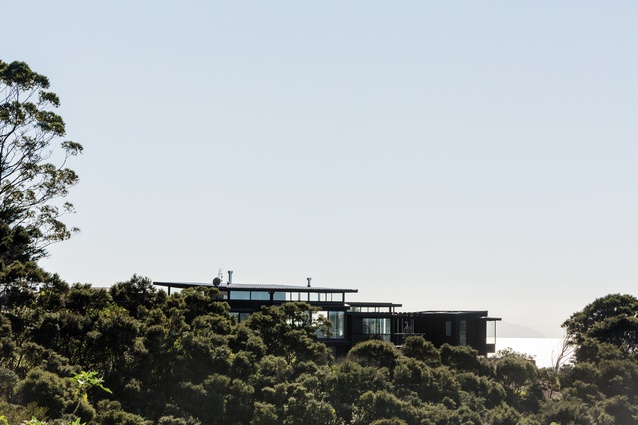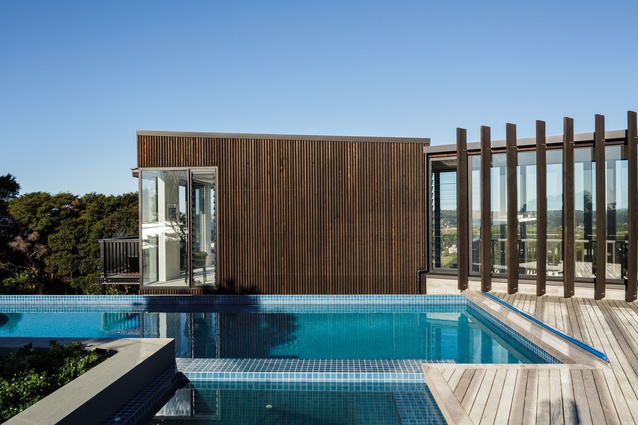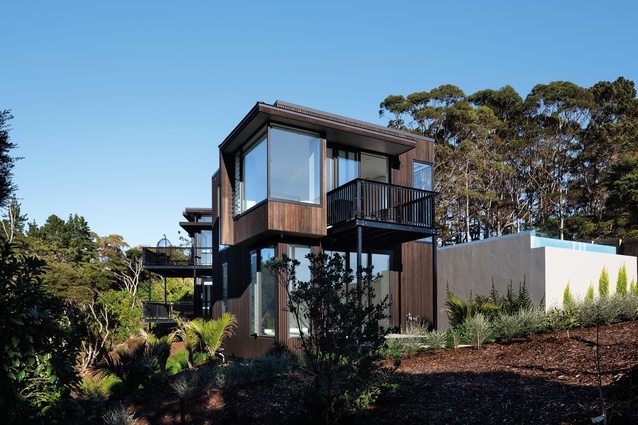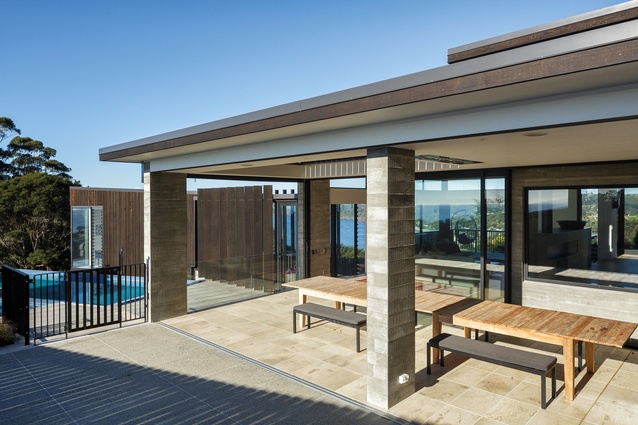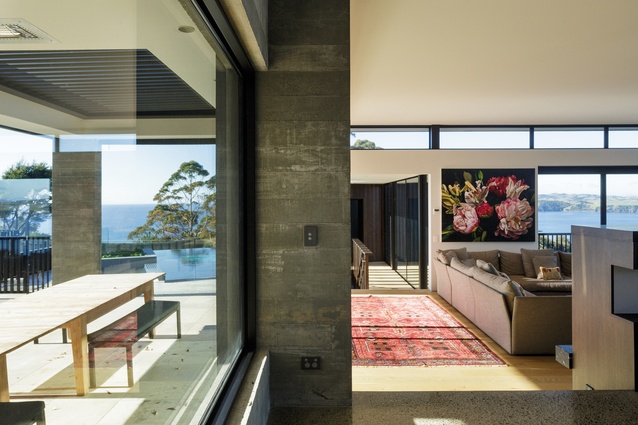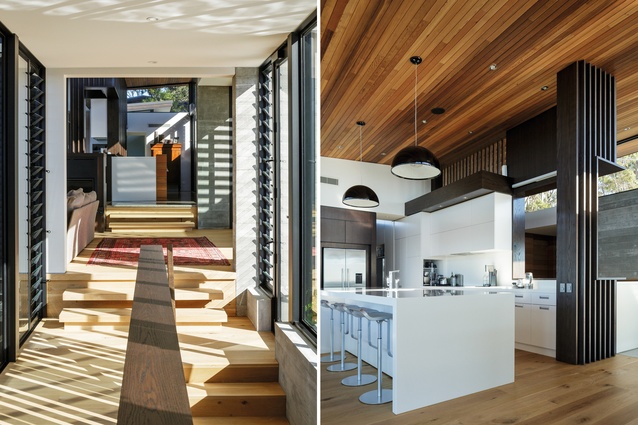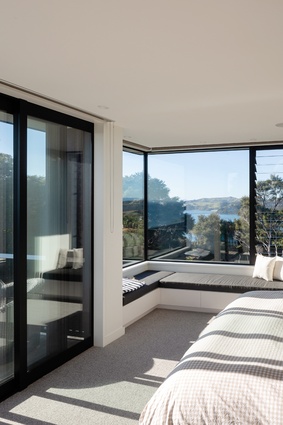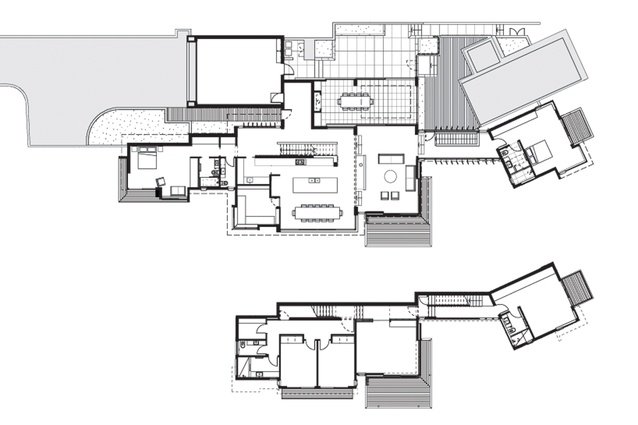Creating a journey: Ridge House
A ridge line retreat on Waiheke Island takes visitors on a considered journey of panoramic views.
Navigating a winding journey up the hill and along a lengthy driveway towards the ridge line retreat, overlooking Onetangi Beach on Waiheke Island, allows a level of expectation to build; the bucolic views to the south-east tease the visitor and anticipation grows for the greater view of the bay at the end of the ridge line.
Navigating this expectation by creating a journey of views became a key driver of the design, says Scarlet Architects’ Jane Aimer, because delivering an open-plan panorama of views on a site with a north-east outlook leaves little to contemplate.
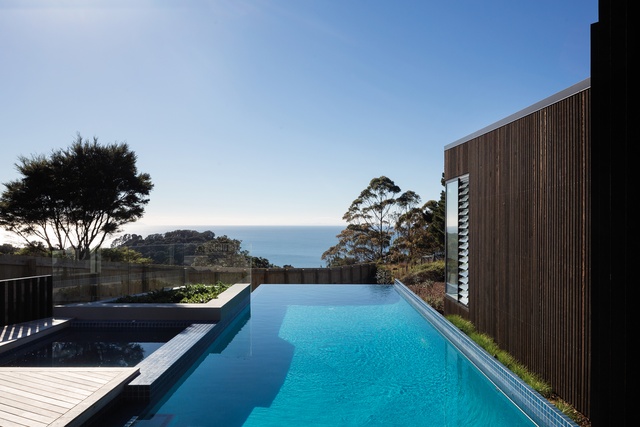
“We had the notion that you would arrive in a very cloistered courtyard where you weren’t aware of the views – it was low scale and confined,” says Aimer. “You don’t arrive and say, ‘Wow, look at the view!’; you have to engage with the house and the materials and the journey from the beginning in order to experience the view.”
For the client, a Kiwi family living overseas, the retreat is used as a bach and a home base when they’re in New Zealand, so it was important that the materiality is robust and looks after itself, and that the place allows them and their guests to unwind.
In order to achieve a deceleration of energy, the entry pavilion’s low profile is constructed from in-situ concrete with the imprint of band-sawn timber on its surface, anchoring the home to the site and marrying it easily with the warm and tactile cedar-clad entrance.
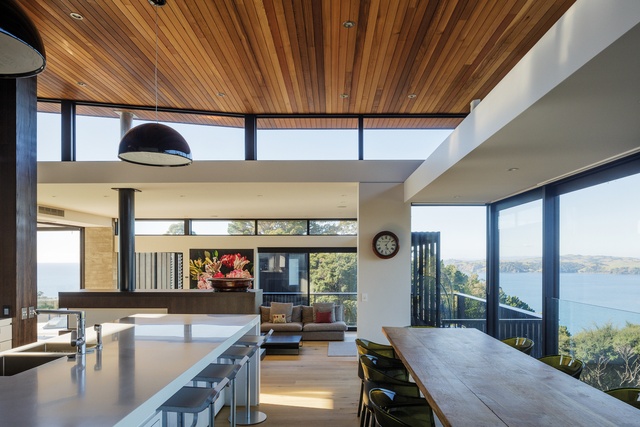
During the journey down the timber boardwalk to the entry, the views are still entirely concealed, building up the suspense of the passage.
In the concrete foyer, a strip of soft light cascades down from a skylight sliced into the concrete structure, offering up a spiritual sense of arrival. It is in this space that the first snippets of a view are glimpsed.
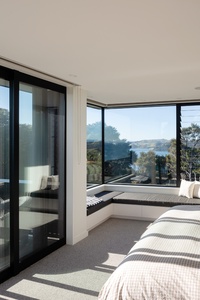
At this point, various options are presented: meander through to the kitchen and dining space with views out to the east; step down to the living space with adjacent outdoor living; take the concrete stair down to the bedroom and rumpus spaces; or head down a cascade of levels to the master suite, which, arguably, takes in the most stunning views of the house.
Dead-end pathways in the home are rare; the concrete path that snakes down four split-levels, past bedrooms, rumpus and gym, returns back up to the living space via an oak staircase.
“It is really about that journey – you don’t just go down a stair and you’re at the bottom,” says Aimer. That journey also serves to unfold the various outlooks. “We wanted to encapsulate interesting views and have anyone in the house experience them at different times as they move through the building.”
The sense of a narrative passage is further enhanced by exterior timber fins that direct the eye to different vistas but hide the interior from exterior view. While the visitor is treated to a story of endless panoramas, from down on the beach, the dark-stained, low-profile house is almost hidden from sight.
Material Selector
Jane Aimer discusses the materials chosen for the Ridge House.
Why was in-situ concrete selected for the entrance?

That was around wanting the house to feel very anchored as you arrive – the concrete is used around the garage and entry so that it feels very solid – we dipped down quite a bit from the natural ground level on the ridge so that the structures were buried, solid and anchored. We made the decision to do the in-situ [concrete] with the timber formwork, which means you achieve that really nice texture.
How does the use of cedar cladding complement the concrete?
The dark-stained timber was utilised to make the house as recessive as possible – if you go down to Onetangi and look back at the ridge line, you can hardly see the house because of the dark colour. Whereas, if it had all been concrete, it would have had a white colour and it would have stood out a lot more.
How have you used timber and concrete in the interior to inform the journey?
In areas where people are arriving and where there aren’t huge views, we’ve used materials like timber and concrete to give more interest and texture and to articulate the spaces but, as you move around into the other spaces, we’ve tended to let the views speak for themselves.
This article first appeared in Houses magazine.


